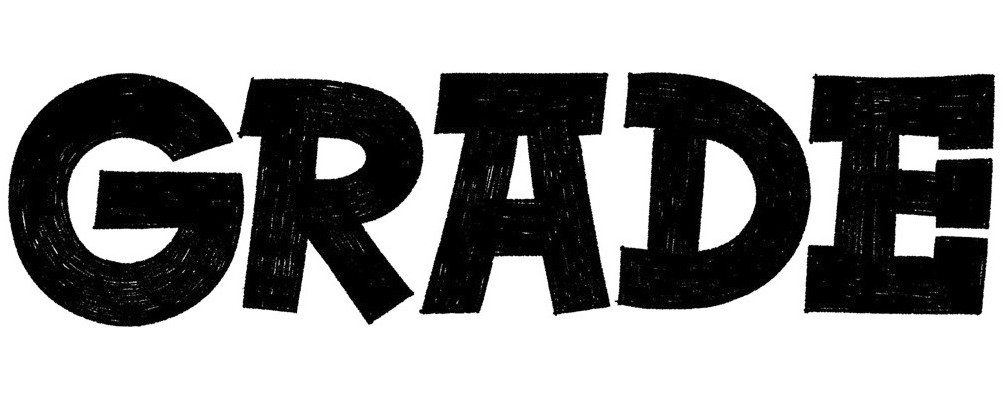
SHOOT THE STORY VOL. 17: ALISON BRAUN
California photographer Alison Braun found the rise of hardcore punk as a teenager. Knowing that this genre will leave an important mark on music history, she filmed shows of local and foreign bands throughout the 1980s from the age of 15.
Based on these archives, she presented IN THE PIT book, a photographic chronicle of the 1981-1990 punk scene.
We asked Alison to talk about how she got involved in punk journalism, remember the highlights of her life in 80s, and share stories from shows that particularly impressed her.
Based on these archives, she presented IN THE PIT book, a photographic chronicle of the 1981-1990 punk scene.
We asked Alison to talk about how she got involved in punk journalism, remember the highlights of her life in 80s, and share stories from shows that particularly impressed her.
August 2021 represents the 40th year of my photography career. I shot my firstshow on August 3rd, 1981 at the
I was raised by parents who had specific ideas about gender roles in society (based on their post‐Depression upbringing) but on the other hand had a strong sense of fairness and raised me to speak up, defend myself when necessary while still managing to be "lady‐like." Punk Rock completely tossed out the latter. There was no room to be anything other than bold when trying to photograph a punk show. I kept pushing forward both physically and metaphorically until I was satisfied, that I was in the best position to pursue my art – on the stage, next to the band.
I was raised by parents who had specific ideas about gender roles in society (based on their post‐Depression upbringing) but on the other hand had a strong sense of fairness and raised me to speak up, defend myself when necessary while still managing to be "lady‐like." Punk Rock completely tossed out the latter. There was no room to be anything other than bold when trying to photograph a punk show. I kept pushing forward both physically and metaphorically until I was satisfied, that I was in the best position to pursue my art – on the stage, next to the band.
Could you remember the very first show you were on? How it was?
The first Punk show I went to was an X concert at the Whisky a Go Go, in Hollywood sometime in mid 1980. The Whisky was not a big club, and no matter where you stood, you were close to the band. It was something I had not previously experienced. The only other concerts I had attended previously were "arena" shows with huge bands like Kiss.
In article for MoPop you tell a lot about Whisky bar. Please describe this place in detail, especially about things that impressed you the most.
The Whisky was a very influential club on the Sunset strip, not far from my house. It had always served as an incubator for up-and-coming bands. Mostly I was impressed by how small it was. It had an upstairs balcony that was the perfect place to take live group shots. The security and management staff were always very kind to me. I would routinely show up early with the hopes of being let in free.
DOA, Whisky, August 3, 1982

How did you feel when Flipside zine published your first images of Wasted Youth?
I was elated. I sent the photo off to the magazine as unsolicited contribution and was thrilled when I saw it published. Hudley, the publisher is still in contact to this very day.
Why did you decide to focus on the hardcore / punk / metal scene for the most part? Not a new wave, hip hop and so on...
In the early 1980's when I started my photographic career, I gravitated to the music that felt connected to. I liked punk because it was loud and angry. The rebellious message hit me like a hammer, and I was completely taken in. I hated new wave because to my thirteen - year - old self, I thought the music was boring and lacked a message. What would become west coast hip hop, did not yet exist at that time.
MDC –Dave Dictor Whisky, August 3, 1982

Why did you start to not only to shoot but also conduct band interviews, photo shoots, and authoring scene reports? Why it was important to you?
Excellent question. As part of a "scene" I wanted to give something back. Since I was not in a band, the best way for me to contribute was with my writing and photographic skills. I understood early on that this was history in the making and it needed to be recorded. 40 years later, that decision I made as a kid , proved to be a good one.
Talking about 80s punk scene in MoPop article you said: "Few women writers and artists, even fewer women in bands." Now this problem is almost nonexistent. Why do you think women came to punk later than 80s?
The problem is not currently nonexistent. The gender breakdown of my social media followers' skews 84 % male. According to Statista, in 2019 the share of female artists in popular music in the USA was 22.5% . So, there is still a huge gender - based disparity in popular music. There are a few more women in bands but gender parity is still pretty weak.
Wasted Youth, Whisky August 3, 1981 – from the first roll of film I shot at a punk show

I set boundaries around myself – I was not just hanging around, trying hook up, I was providing a service as an artist and writer. I wanted to be taken seriously for the images I produced and my contributions to the scene. When I was backstage, I shot pictures, when I was in a studio, I shot pictures. My camera gear became a personal barrier against sexism and the threat of sexual assault. Protect the camera gear and you protect yourself. Don't get drunk‐ protect the camera. Don't take drugs‐ keep that camera on your shoulder. Boys? Meet my camera. Oh, and meet my father, who is standing over there at the bar.
None of this would have happened without my father. Before I learned to drive, he would drop me off at Sunset Strip in front of the clubs and dutifully pick me up. A lot of times he came in with me. He sat at the bar or a table in the back of the club. They called him Big Stan and he ingratiated himself to all the bands he met. In 1987, when Jello Biafra (Dead Kennedys) was brought up on pornography charges as part of a campaign spearheaded by Tipper Gore and the "Parent's Music Resource Center" my father loaned him a tie for his court appearance. Biafra was not convicted. When my father died, I buried him in that tie.
© Alison Braun for Museum Of Pop Culture blog
None of this would have happened without my father. Before I learned to drive, he would drop me off at Sunset Strip in front of the clubs and dutifully pick me up. A lot of times he came in with me. He sat at the bar or a table in the back of the club. They called him Big Stan and he ingratiated himself to all the bands he met. In 1987, when Jello Biafra (Dead Kennedys) was brought up on pornography charges as part of a campaign spearheaded by Tipper Gore and the "Parent's Music Resource Center" my father loaned him a tie for his court appearance. Biafra was not convicted. When my father died, I buried him in that tie.
© Alison Braun for Museum Of Pop Culture blog
DEAD KENNEDYS – Florentine Gardens September 6, 1981
I sat on the corner of the stage keeping my eyes on the band. Biafra paced across the length of the stage and the space begin to fill with fans intent on sharing the stage with Biafra. It was midpoint through the set so kinetic energy from the crowd continued to build. Then almost on cue, the stage became overrun with a torrent of sweaty people. I started backing up and climbed onto a monitor in a feeble attempt at creating some space around me. The monitors then began to rock back and forth, moved by the crowd who seemed intent on toppling them. I jumped off the monitor with all my camera gear and headed to a row of seats above the floor.
By this time the entire audience moved in unison like a giant amoeba - back and forth, left, and right. I could no longer see the band on the stage. They were engulfed in a sea of fans diving off the stage, then returning to do it again. I stared in awe from my seat. It was the most intense thing I had ever seen at a concert.
By this time the entire audience moved in unison like a giant amoeba - back and forth, left, and right. I could no longer see the band on the stage. They were engulfed in a sea of fans diving off the stage, then returning to do it again. I stared in awe from my seat. It was the most intense thing I had ever seen at a concert.

I can't remember who was on stage, but it ended poorly. The cops came in from the far end of the hall, corralling people by the stage. To leave, you had to double back through the police line or find the backstage door. In the mayhem, I went out the back. Back on the street more and more cops started arriving and running people off the sidewalks with their open car doors. Kids ran and jumped into random cars to get away safely. The cops beat every single unarmed kid they could find. The Exploited never took the stage that night. The only people who got to see them play that night were those of us at sound check.

A Fair Fight. Descendents. Godzilla's, January 14, 1982
It was a night at Godzilla's, and I was getting out of my dad's car. Right in front of the car is a big fight. Not just a pushing match but a real Donnybrook. One dude sucker punches the other and he hits the ground, whereupon the other guy starts kicking him with his boots. My Dad yells something and gets out of the car. (My dad carried a 38 in a holster on his belt.) I am beyond embarrassed. Stan (dad) gets in the middle of the fight and starts yelling in his best Brooklyn accent "If you want to fight, fight like men and have a fair fight!". He took issue with the guy getting kicked while he was on the ground. And you know what? those numbskulls listened. That was my dad, Stan Braun.

Discharge, Cal Morris 10/2/1982 Florentine Gardens
There are times a crowd goes nuts, and then there are times that they are so mesmerized that they look on in awe. Being a fan of the music, I knew what to expect from the sound but was completely blindsided by the fury. Then there was the swinging mike cord. Around and around in a huge angry ring. That at one point came so close to my head, it nearly touched my hair. Damn that was close. I dodged the next upswing and moved closer.

Battalion of Saints. Chris Smith T-Bird Rollerdome March 4th, 1983
Chris was my muse. I loved photographing that band and him in particular. He was a great performer, and a friend. His death affected me greatly.

SHOOT THE STORY VOL. 17: ALISON BRAUN
Instagram: @alisonbraunphoto
https://alisonbraun.com/
Buy "IN THE PIT" book by Alison Braun
Instagram: @alisonbraunphoto
https://alisonbraun.com/
Buy "IN THE PIT" book by Alison Braun

Grade Moscow
25 Jun, 2021

